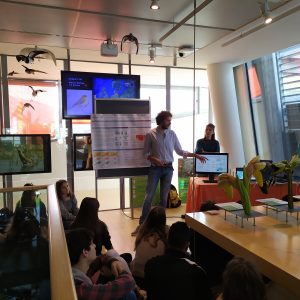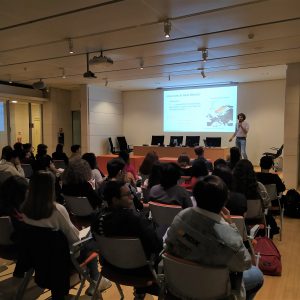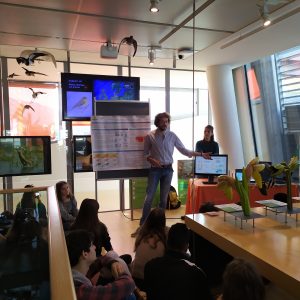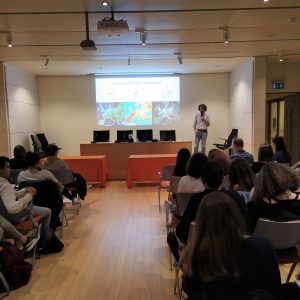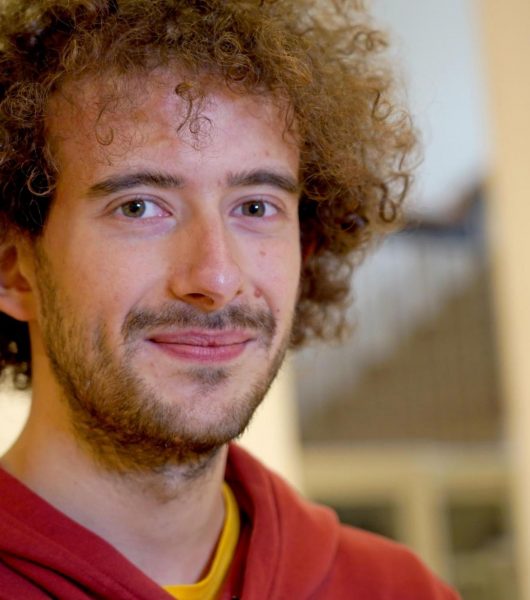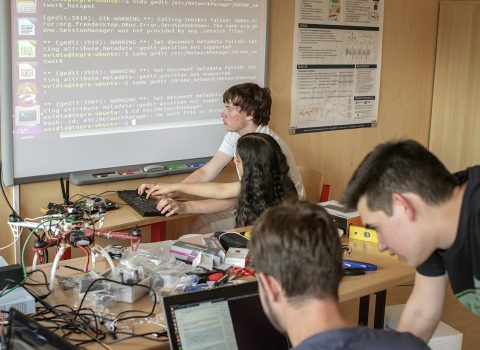
Artificial intelligence to mitigate the effects of climate change
Fondazione Bruno Kessler's researchers talked about how technology can be used to protect the environment at Trentino Clima 2019
Big data and machine learning as allies of the environment and the local area to prevent and mitigate the impact of extreme weather events.
Azra Alikadic and Luca Coviello, researchers from Fondazione Bruno Kessler talked about it at Trentino Clima 2019, an initiative that turned the spotlight on climate change and its effects on the local area and on society October 23 through 26.
Starting from a set of data, the researchers from the FBK MPBA unit outlined the current climate scenario (alarming as never before) and also explained the phenomenon of Heat Waves (defined as at least three consecutive days of highs above the average temperatures typical of a given region in a 31-day window) that, especially in the past three summers, have also hit Europe hard, and how artificial intelligence solutions can help to mitigate its effects in multiple contexts, from civil protection to agriculture. Actually, precisely to the end of developing models capable of predicting heat waves in agriculture, the researchers from Fondazione Bruno Kessler had received a grant from the Microsoft Azure AI for Earth program.
A partire da una serie di dati, i ricercatori dell’Unità MPBA di FBK hanno disegnato lo scenario climatico attuale (allarmante come non mai) per poi soffermarsi a spiegare il fenomeno delle Heat Waves, le ondate di calore estremo (almeno tre giorni consecutivi di temperature giornaliere massime al di sopra alle temperature medie usualmente sperimentate in una data regione in una finestra di 31 giorni) che soprattutto nelle ultime tre estati ha colpito con forza anche l’Europa, e come soluzioni di intelligenza artificiale possono aiutare a contrastarne gli effetti in molteplici contesti, dalla protezione civile all’agricoltura. Proprio per elaborare modelli in grado di predire le ondate di calore in quest’ultimo ambito, i ricercatori della Fondazione Bruno Kessler hanno ricevuto un grant del programma AI for Earth di Microsoft Azure.
The data provided by the NOAA (National Oceanic and Atmospheric Administration, the equivalent of NASA but limited to the study of the Earth) are eloquent. “Last September was the warmest ever recorded since 1880, the year in which data started to be recorded and virtually every continent has experienced “anomalous” weather events, from ice melting at the poles, violent storms, intense heat and long periods of drought – the researchers explained-. In recent years, extreme weather events such as Heat Waves have been constantly increasing and it is to be expected that, due to the rise in atmospheric temperature, they will continue to be the case in the near future, with greater frequency and strength, for duration and temperature levels”
Precisely about the effects caused by the Heat Waves, the researchers suggested data-driven action models. “Today, we have the possibility to access a large amount of data including environmental, meteorological, demographic and urban development data – Alikadic and Coviello explained – and by combining these Big Data with artificial intelligence systems we can develop algorithms that enable us to characterize these phenomena and their effects. For example, we can predict when a heat wave will occur, what effects it will have on agriculture or on individual plots of land, and create risk maps of a city or a specific area“.
This kind of information can be extremely useful since Heat Waves are not just extremely hot days but they have a significant impact on many aspects of our lives. In agriculture, for example, they involve a drop in land yield, water loss and lower crop quality, while for humans they pose a serious health hazard, especially for those categories of people at higher risk, such as seniors and children.
“In this sense, artificial intelligence systems can help in at least three major stages – the researchers explained -: in monitoring and prevention, by using technology to monitor current conditions and simulate future ones; in issuing early alerts in case of extreme events and allowing for timely organization in order for the affected population to face them; in intervention actions in the area affected during and after the event to restore the normal situation“.
Finally, a consideration: “Every action of ours has an effect on the planet and as scientists we are convinced that technology can and should be used for the good of the planet – the researchers concluded -. We must keep working on artificial intelligence technologies that will analyze environment and society-related big data, and we are convinced that we must all work together, computer scientists, biologists, agronomists, to solve the challenges related to climate change“.
At Trentino Clima 2019, Fondazione Bruno Kessler held a corner dedicated to schools and teachers on October 25. In addition to the MPBA Unit researchers who talked about artificial intelligence applied to the environment, FBK also contributed with the presentation of the School-to-Work program project called Che Aria and with the Kids go Green project, a sustainable mobility project that combines playing and innovative teaching techniques.
